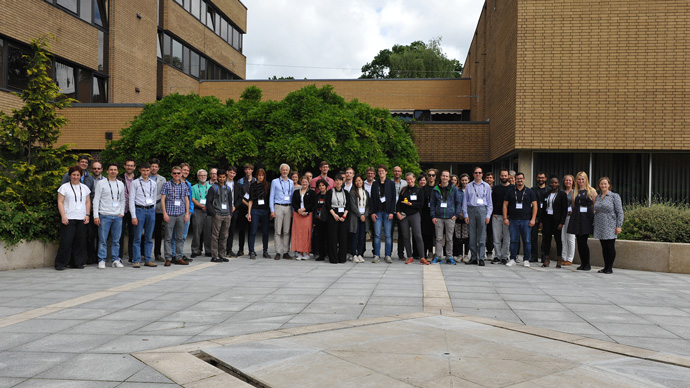A forum for exchanging ideas and experiences on the use of ECMWF data and products
“Using ECMWF’s Forecasts” provides a platform to discuss the use and performance of ECMWF's forecasts and related products. It is open to all ECMWF forecast users around the world and provides an opportunity to give feedback on forecast performance and on the range of available products, to learn about ECMWF’s recent developments of its forecasting system and to share experiences and network with ECMWF and other users.
To maximise attendee's experience, UEF2022 was primarily an in-person event. There were some opportunities for some engagement virtually. The in-person component took place at ECMWF's headquarters in Reading, UK.
2022 Theme: Visualising Meteorological Data
This year's theme of "Visualising Meteorological Data" was developed using suggestions from attendees of previous UEF meetings, recent events and hot topics, and after discussions with a variety of ECMWF staff and users in Member and Co-operating States.
Overview
The meteorological community produces and uses a vast amount of data on a daily basis. The effective visualisation of this plethora of data is vital to ensure users can understand and effectively use forecasts and meteorological data.
In 2022, ECMWF will finalise the move of its data centre to a new facility in Bologna and the new Atos machine will substantially increase the computing capacity for forecasting on both weather and climate timescales. With IFS model upgrade Cycle 48r1 the medium range ensemble member resolution will increase to 9km. The number of ensemble members in the extended-range forecasts will also double to 100 and the extended-range forecast will run every day instead of twice weekly as it currently does. These developments will all significantly increase the amount of forecast data produced.
As more national meteorological and hydrological services (NMHSs) have Open Data initiatives, there is a need to not only make the raw data accessible but to develop products which use the Open Data, like ECMWF's OpenCharts. The opening of this data benefits the worldwide meteorological community but products need to be well visualised to be understood and have maximum impact.
Climate models are also increasing in complexity as our scientific understanding improves resulting in more data. The Copernicus programme at ECMWF, C3S and CAMS, delivers substantial economic value to Europe by combining observations of the climate and atmosphere systems with the latest science to develop authoritative, quality-assured information on the past, current and future states of the climate and our atmosphere.
Hackathon 2022: Visualising Meteorological Data will be held the weekend following UEF2022. UEF2022 participants are encouraged to attend this exciting event to delve deeper into the theme!
Aims
The aim of UEF2022 was to explore how this rapidly expanding amount of weather, atmosphere and climate data can be made useable and useful to users through effective visualisation. Interactive sessions were held to explore data visualisation including looking at current ECMWF forecast products and asking how these can be improved.
